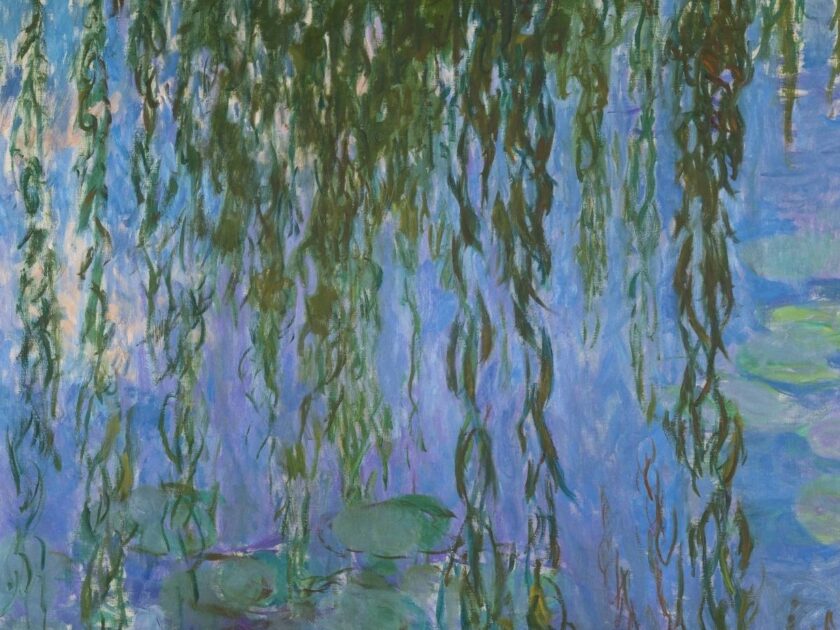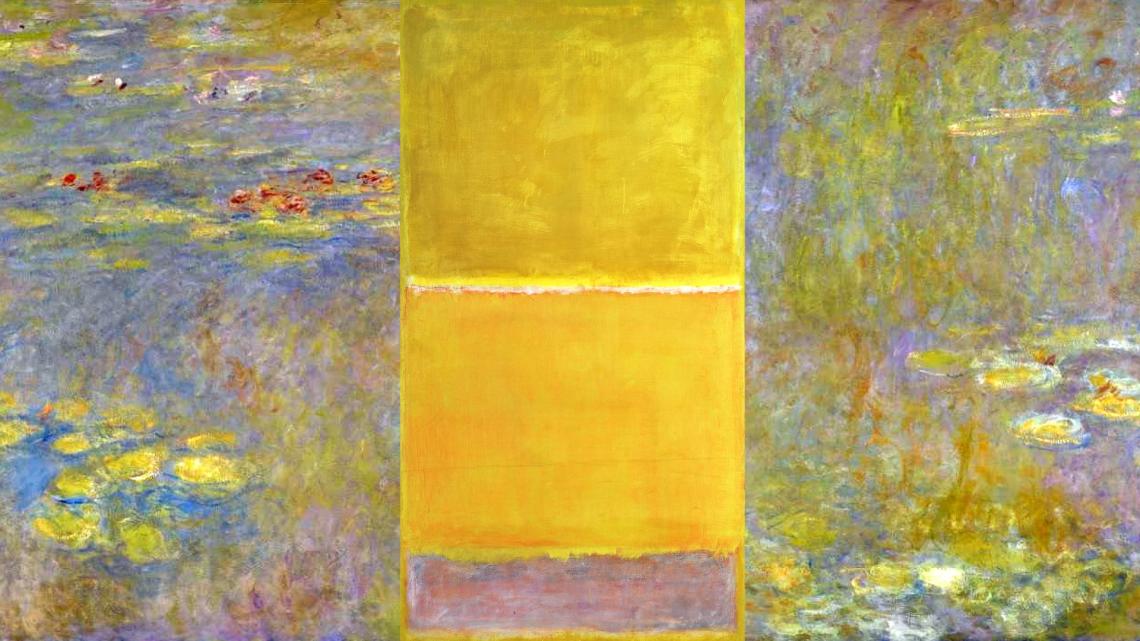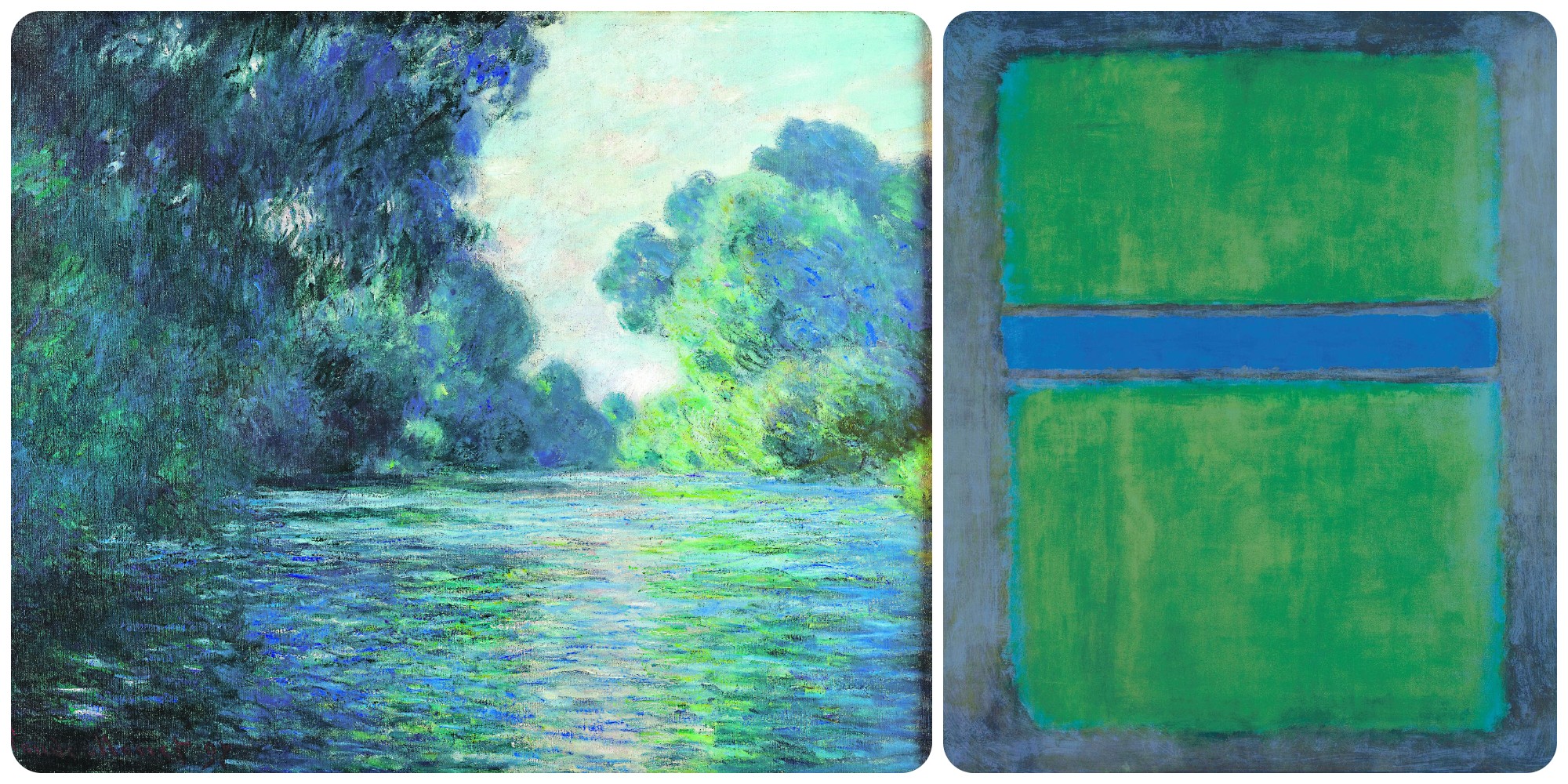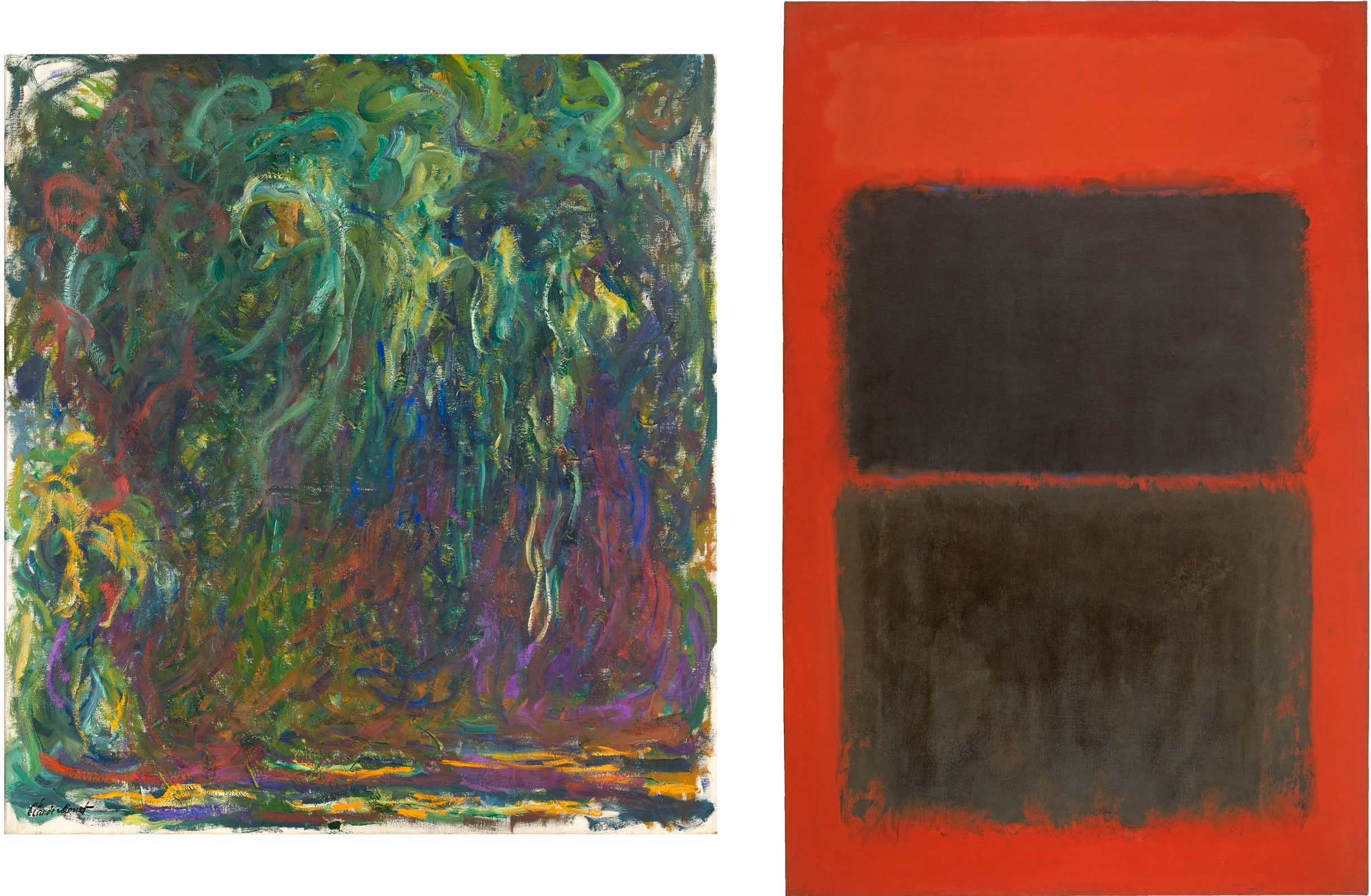The Giverny Museum of the Impressionists offers a unique experience with a dialogue between the works of Claude Monet and Mark Rothko. The exhibition immerses the viewer in the contemplation of this unprecedented spectacle, between the works of the master impressionist and the abstract and colourful paintings of Mark Rothko.

Research into Impressionism and the development of Monet's work has in recent years focused researchers on the great painters of abstraction. Many artists of the second half of the twentieth century drew their inspiration from the works of the master of Impressionism, notably Mark Rothko.

The exhibition compares and contrasts six works by Claude Monet and Mark Rothko and sheds new light on the work of both artists.
The first room features Monet's painting The Weeping Willow, painted between 1920 and 1922 in shades of yellow, violet, green and red. The palette is very limited and he plays on the concentration of colours. This principle of adapting the eye is taken up by Rothko in his 1957 work Light Red Over Black in the same room. The canvas has a red background and in the centre a black rectangle is split in two. The eye is lost in the red colour and forgets the black, which is in the centre. The structure of the work is provided by the colours and not the shapes.
In the second room, the viewer is confronted with Monet's Japanese Bridge, a reference to the bridge that Monet had installed in his garden and which was to become the emblem of the garden. Monet wanted to convey the force of the natural elements, the trembling of the branches, the weight of the leaves on the water... The artist uses touches of abstract colour to create the dynamics and movement of the poetry of the world. In the lower part of the painting, for example, the abstract strokes illustrate the reflection of the leaves on the water of the pond. Rothko also seeks this effect in his 1968 work.

Finally, the last room is devoted to Rothko's famous Untitled painting in green and blue tones. On a dark blue background, the painter has sketched an off-centre green line that disturbs the eye, which was looking for a balance in the blue. The three works by Monet (Bras de Seine près de Giverny, Nymphéas and Nymphéas avec rameaux de saules) which confront this painting use this same process of decentralising the gaze by using loose, abstract touches of colour.


The dialogue between the works of Monet and Rothko offers a sensory and visual experience to the viewer who is lost in a space-time specific to this symbiosis. Monet's paintings take the viewer immediately back to the heart of his emotions, into the intensity and immediacy of the moment, while Rothko's paintings plunge the viewer into a slower contemplation deep within himself. Rothko offers a more modern take on what Monet conceived as abstraction. The viewer comes away from this experience disoriented, in an artistic vertigo that offers a new vision of abstraction and modernity.



